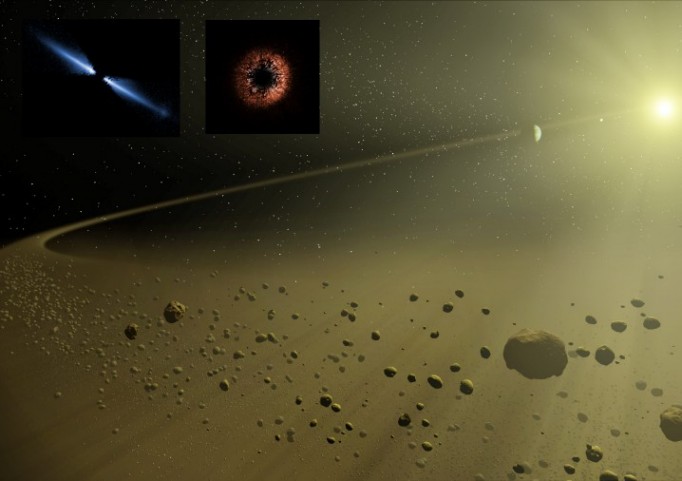
|
Credit & Copyright: HST images
Explanation:
In this dramatic
artist's vision,
debris along the outer
reaches of a planet forming disk orbits in the
glare of a distant sun.
But inset are actual images of such
disks around two
nearby stars - AU Microscopii
(top left; edge-on) and HD107146 (right: face-on) -
as seen by the Hubble
Space Telescope.
Combined with
infrared images from the
Spitzer
Space Telescope that show debris disks around known planet bearing
stars, the data
provide the first direct link
between extrasolar
disks and planets, suggesting a
scenario where evolving planets scatter debris
produced by collisions
into giant disks.
In time, the dusty
disks may dwindle and become like our own
Solar System's comet reservoir, the
Kuiper Belt.
News: The answer to
Lewin's Challenge APOD can be found
here.
|
January February March April May June July August September October November December |
| ||||||||||||||||||||||||||||||||||||||||||||||||
NASA Web Site Statements, Warnings, and Disclaimers
NASA Official: Jay Norris. Specific rights apply.
A service of: LHEA at NASA / GSFC
& Michigan Tech. U.
Based on Astronomy Picture
Of the Day
Publications with keywords: disk - dust - extrasolar planet
Publications with words: disk - dust - extrasolar planet
See also:
